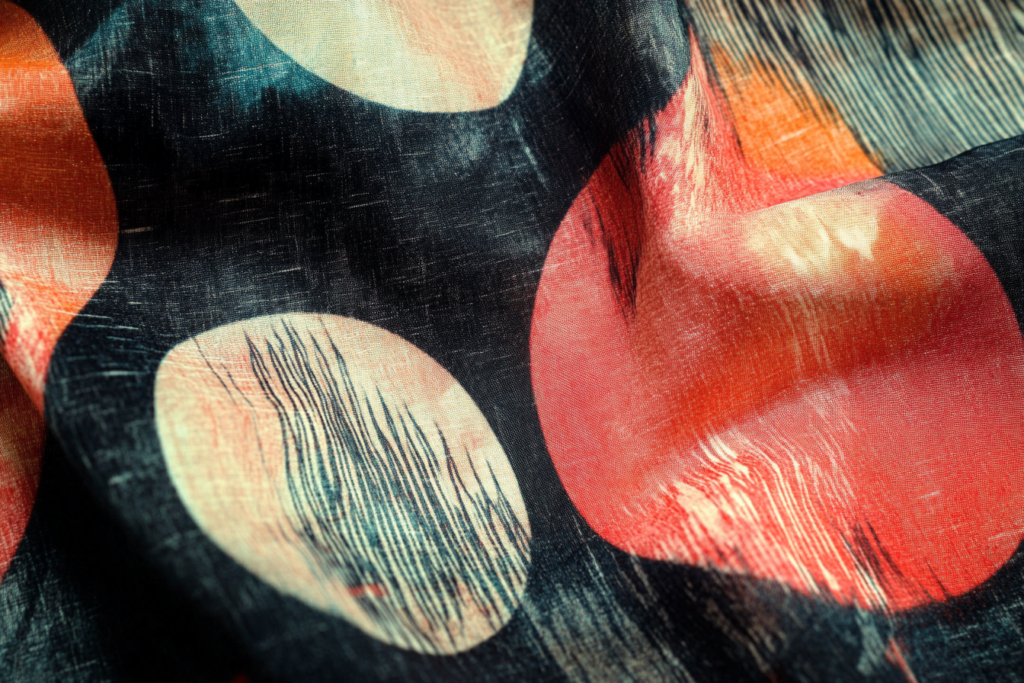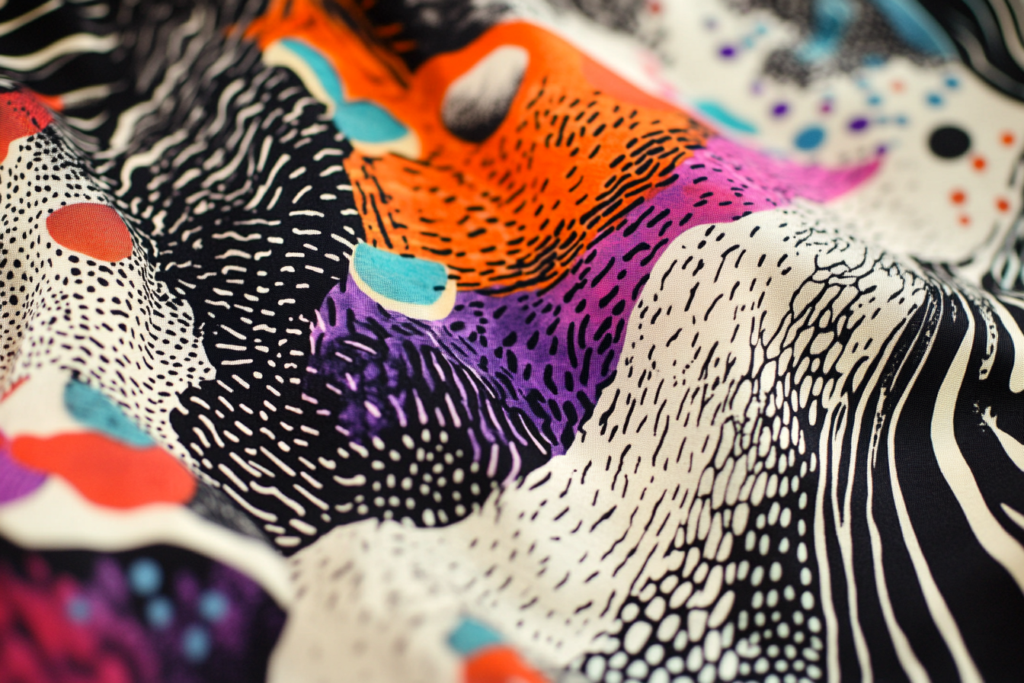Introduction: What is an Engineered Print?
An engineered print refers to a pattern or design that is deliberately placed in a specific location on a garment to enhance the overall visual effect or to accommodate the garment’s structure. This technique is commonly used in fashion design, particularly for creating designs that highlight specific parts of the garment, such as the neckline, waist, or hem. Engineered prints are carefully planned to ensure that the pattern aligns with the shape and form of the garment, making it look more tailored and aesthetically pleasing.
Unlike traditional prints, which are applied uniformly across the fabric, an engineered print is strategically positioned to complement the silhouette or design elements of the garment. It can be used to draw attention to particular features, like a flattering placement around the waist, or create visual interest by aligning the print with the structure of the garment.


How Engineered Prints Work
To create an engineered print, the designer or pattern maker first determines which areas of the garment will benefit most from a specific pattern placement. The process involves careful consideration of how the print will interact with the garment’s shape, construction, and movement.
Here’s a basic overview of the process:
- Design the Print:
- The designer creates the print, paying close attention to the shape and positioning. They may create variations of the print to suit different garment parts, such as the bodice, sleeves, or collar.
- Plan the Placement:
- Once the print is designed, the designer decides on its location on the garment. For example, they may choose to position the print around the bust for emphasis or along the hem to create a slimming effect.
- Align the Print with the Garment:
- When the fabric is printed, it’s important to ensure that the pattern aligns properly with the garment’s panels and seams. This may require precise cutting and pattern placement to ensure that the design flows naturally when the garment is constructed.
- Sew and Construct the Garment:
- After the fabric has been printed with the engineered design, the garment is sewn together, with special attention given to how the print aligns with the overall structure. This ensures that the print flows seamlessly across the finished piece.
Benefits of Engineered Prints
- Enhanced Design Aesthetics:
- Engineered prints can be used to emphasize the best parts of a garment, like the waistline or shoulders, creating a more flattering look. By carefully aligning the print with the garment’s shape, designers can highlight or minimize certain areas to create a balanced silhouette.
- Customization and Uniqueness:
- Each engineered print is custom-made for a specific garment, making it unique to that piece. This allows fashion designers to create one-of-a-kind designs that stand out in a crowded market.
- Visual Appeal:
- The strategic placement of prints can create stunning visual effects that wouldn’t be possible with a standard all-over print. This makes engineered prints ideal for statement garments or items meant to stand out.
- Optimized Use of Fabric:
- By designing prints that fit particular areas of the garment, designers can optimize fabric usage. This minimizes waste and ensures that the pattern is placed in the most flattering way possible, without unnecessary repetition or misalignment.
Where Are Engineered Prints Used?
- High-Fashion Garments:
- In high-fashion collections, engineered prints are often used to create visually striking garments that push creative boundaries. Designers might use engineered prints to emphasize dramatic shapes, such as oversized collars or asymmetrical cuts.
- Sportswear and Activewear:
- Engineered prints are commonly used in activewear, where the print placement may align with the garment’s panels, seams, or motion patterns. This is especially useful for creating garments that look dynamic and support the athletic performance of the wearer.
- Casual Wear:
- For casual clothing, such as T-shirts, dresses, and skirts, engineered prints can add visual interest to the fabric while maintaining a clean, tailored look. These prints can be placed in specific spots like the hemline, sleeves, or around the waist to add detail and uniqueness.
- Reversible Clothing:
- Engineered prints are also popular in reversible garments, where the placement of patterns can be designed to look appropriate on both sides of the garment, contributing to a consistent aesthetic no matter which way it’s worn.
Examples of Engineered Prints in Fashion
- Floral Patterns on Dresses:
- In a dress, an engineered print might feature a bold floral pattern that begins at the hem and gradually fades or becomes more delicate as it moves up the garment. This kind of placement draws attention to the lower half of the body, creating a slimming effect.
- Geometric Shapes on Activewear:
- Activewear brands may use engineered prints to place geometric patterns along the sides of leggings or the waist of a sports bra, which enhances the silhouette and provides visual interest during movement.
- Stripes on Blouses:
- A blouse may feature vertical stripes designed to align with the natural flow of the garment, like along the collar or the button placket. This creates a streamlined, flattering appearance and adds sophistication to the overall design.
- Animal Prints on Outerwear:
- On outerwear, such as jackets or coats, engineered animal prints can be placed in strategic areas like the sleeves or collar to create bold visual elements without overwhelming the overall design.
Engineered Print vs. Regular Print
While both engineered prints and regular prints are designs applied to fabric, they differ significantly in their approach:
- Regular Prints: A traditional print covers the entire fabric uniformly, regardless of the garment’s structure. It’s typically used for all-over patterns, like floral prints or polka dots.
- Engineered Prints: These are specifically placed and designed for particular areas of the garment. They are often used to complement the garment’s structure, enhancing its overall design or function.
Conclusion: Why Engineered Prints Are a Game-Changer
Engineered prints are a powerful tool in the designer’s arsenal, offering unique opportunities to create garments that are visually dynamic and tailored to perfection. Whether used in high fashion, sportswear, or casual wear, the strategic placement of these prints elevates the garment, creating a visually compelling effect. As fashion continues to evolve, engineered prints will undoubtedly remain a key technique in garment construction, allowing designers to push creative boundaries while maintaining a polished, professional appearance.



